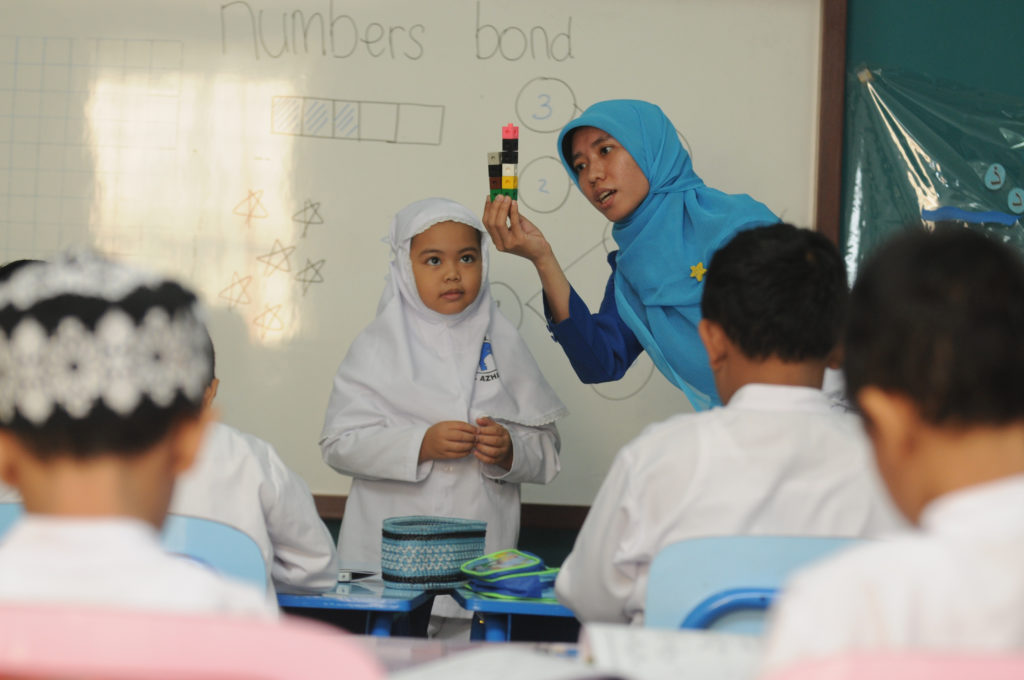Educators Are Innovators
Teachers and School Leaders Transforming Education
Innovation is exciting and transformative. It builds upon or improves something that already exists, which can be an approach, a strategy, a device, or a product. When we innovate in education, we are reimagining education today by improving and transforming various components of education to meet the needs of tomorrow.
 CE International’s mission is to develop and amplify innovative solutions to education challenges. Over the last few months during the COVID-19 crisis, we have seen just how essential innovative thinking is for educators when faced with a challenge. Whether school leaders or teachers, educators everywhere have had to apply rapid response, creative thinking to innovate new ways of reaching and teaching children.
CE International’s mission is to develop and amplify innovative solutions to education challenges. Over the last few months during the COVID-19 crisis, we have seen just how essential innovative thinking is for educators when faced with a challenge. Whether school leaders or teachers, educators everywhere have had to apply rapid response, creative thinking to innovate new ways of reaching and teaching children.
Every day, teachers and school leaders across the world are using innovation and innovative thinking as a way to improve and ensure children’s growth and learning. When we say the word “innovation,” we do not mean just the application of technology to teaching via computers or other technology devices. Innovation does includes technological advancements, but it is so much more than technology.
Innovation in teaching, simply put, is using invention and creativity—it is teachers continuing to improve current methods and discover better ways to deliver content knowledge to children, expand children’s skills, and ensure that children always get the very best learning experiences wherever that learning takes place.
While schools around the world vary in their access to resources, innovation does not require access to large amounts of teaching materials. To be innovative, a teacher simply needs to be excited by the challenge of creating new teaching strategies to meet the needs of a unique groups of learners. In order to do this, they do require a great deal of creativity. Innovative teachers are flexible and resourceful. They have a vision for improving the education and learning experience for children, and a commitment to do so.
 For many educators, being innovative comes naturally in the ways that they plan engaging lessons, and in their ability to self-reflect on how they can improve their own teaching practice and increase learning opportunities. The present COVID-19 crisis is highlighting just how innovative teachers and school leaders can be.
For many educators, being innovative comes naturally in the ways that they plan engaging lessons, and in their ability to self-reflect on how they can improve their own teaching practice and increase learning opportunities. The present COVID-19 crisis is highlighting just how innovative teachers and school leaders can be.
Teachers are also responsible for instilling innovative thinking in the children they teach. CE International recognizes the critical role that teachers play in helping children explore, experiment, and discover the world around them so they can generate new ideas and better solutions to problems. To understand more about how teachers instill innovative thinking in children, please review Principle 6 of CE International’s Principles of Practice for Educators.
 School leaders have the challenge of motivating and inspiring their teachers. They must constantly be looking for innovative and better ways to manage and lead schools. Whether designing professional development opportunities for teachers, managing the daily operations of schools, engaging families in school life, managing community relations, or communicating across stakeholders, all school leaders must be able to respond to ways to improve their practice.
School leaders have the challenge of motivating and inspiring their teachers. They must constantly be looking for innovative and better ways to manage and lead schools. Whether designing professional development opportunities for teachers, managing the daily operations of schools, engaging families in school life, managing community relations, or communicating across stakeholders, all school leaders must be able to respond to ways to improve their practice.
Education Leaders can encourage and nurture innovation in their school by:
- Being a Role Model: Model the way that innovative and creative thinking can lead to improvements in teaching and learning. Ask open-ended questions that allow teachers to use creative thinking to solve education challenges. Encourage the sharing of ideas about ways to improve current practices.
- Identifying and Recognizing Improvements: Identify and recognize when teachers are trying to move an area of their work forward to another level. Provide assistance and guidance as they test out new practices. Help them find ways to measure and assess the benefit of the improved practice or method.
- Making It Safe to Explore: Create an environment where it is safe to explore new ideas. Allow teachers to talk about new things they have tried and allow them to think critically about why new methods were successful or failed. The ability to learn from failure is critical for environments in which innovation flourishes, but teachers must feel comfortable discussing their mistakes openly and get the feedback and support from others to try again.
- Helping Others to See Possibilities: Talk about what is beyond today and look for new possibilities. Constantly reach for more ideas and discuss what your school’s vision is for educating children in your community. Explore better ways to deliver quality and equitable education to all through innovative and creative methods.
- Providing Time and Resources: Give teachers the time and space to be innovative. When the resources exist, provide the time and space for exploration or the technology and other types of resources to help teachers to innovate and create.
- Generating Multiple Answers: Get in the habit of always searching for multiple solutions to a problem. Never stop at the first answer. This encourages and expands innovative thinking.
- Making Innovation a Goal or Strategy: Make innovation an expectation, and value innovation as a part of everyday life in the classroom and school. Provide professional development and training that helps teachers to think innovatively about their own practice and about how to encourage innovative thinking in children.
- Being Resourceful: Innovation is not about the latest and greatest tools and devices. It is about a mindset of finding ways to be inventive with the resources you currently have.
When educators embrace innovation—new and evolving skills, concepts, and approaches that advance teaching and learning—they further children’s development and contribute to addressing both local and global challenges in order to make a better world for all.
